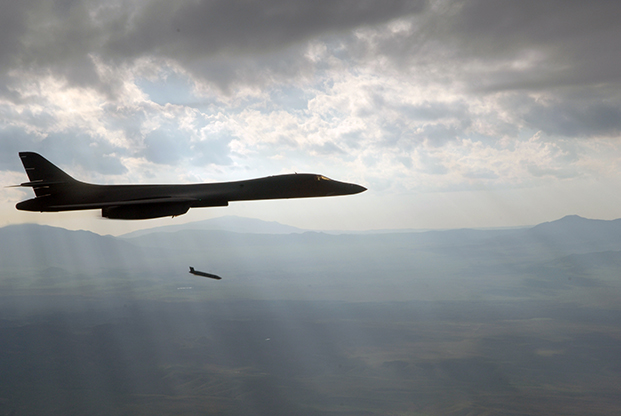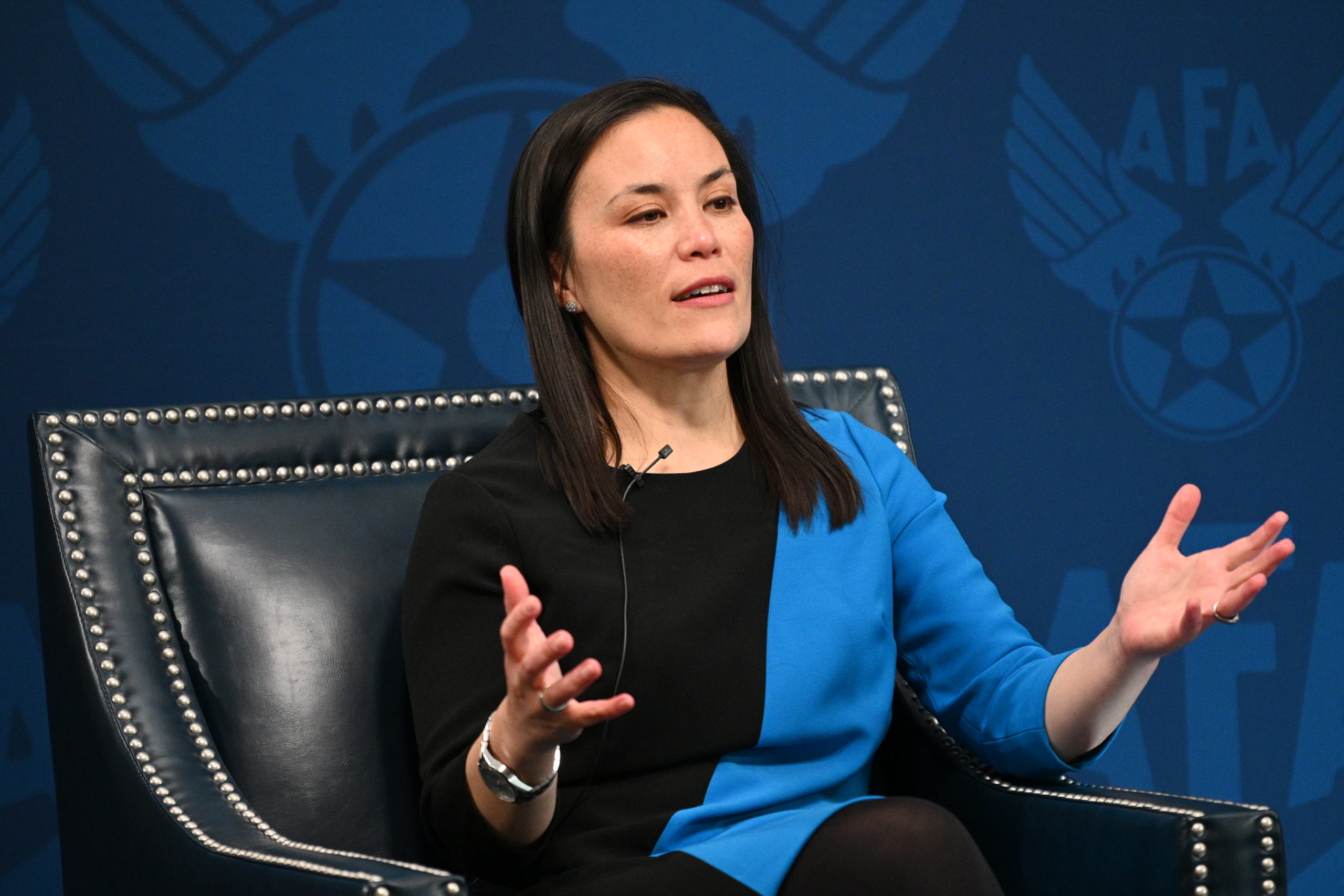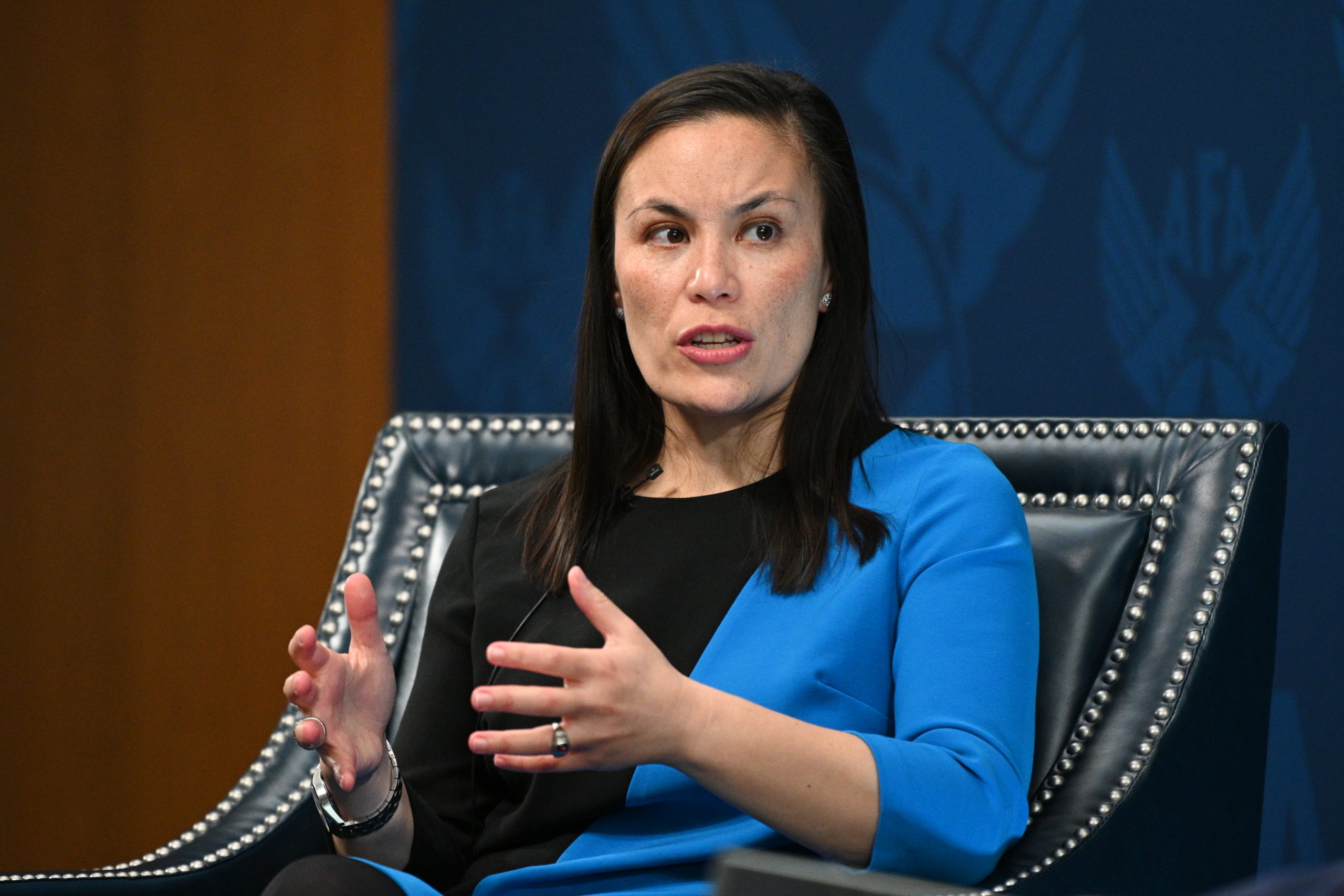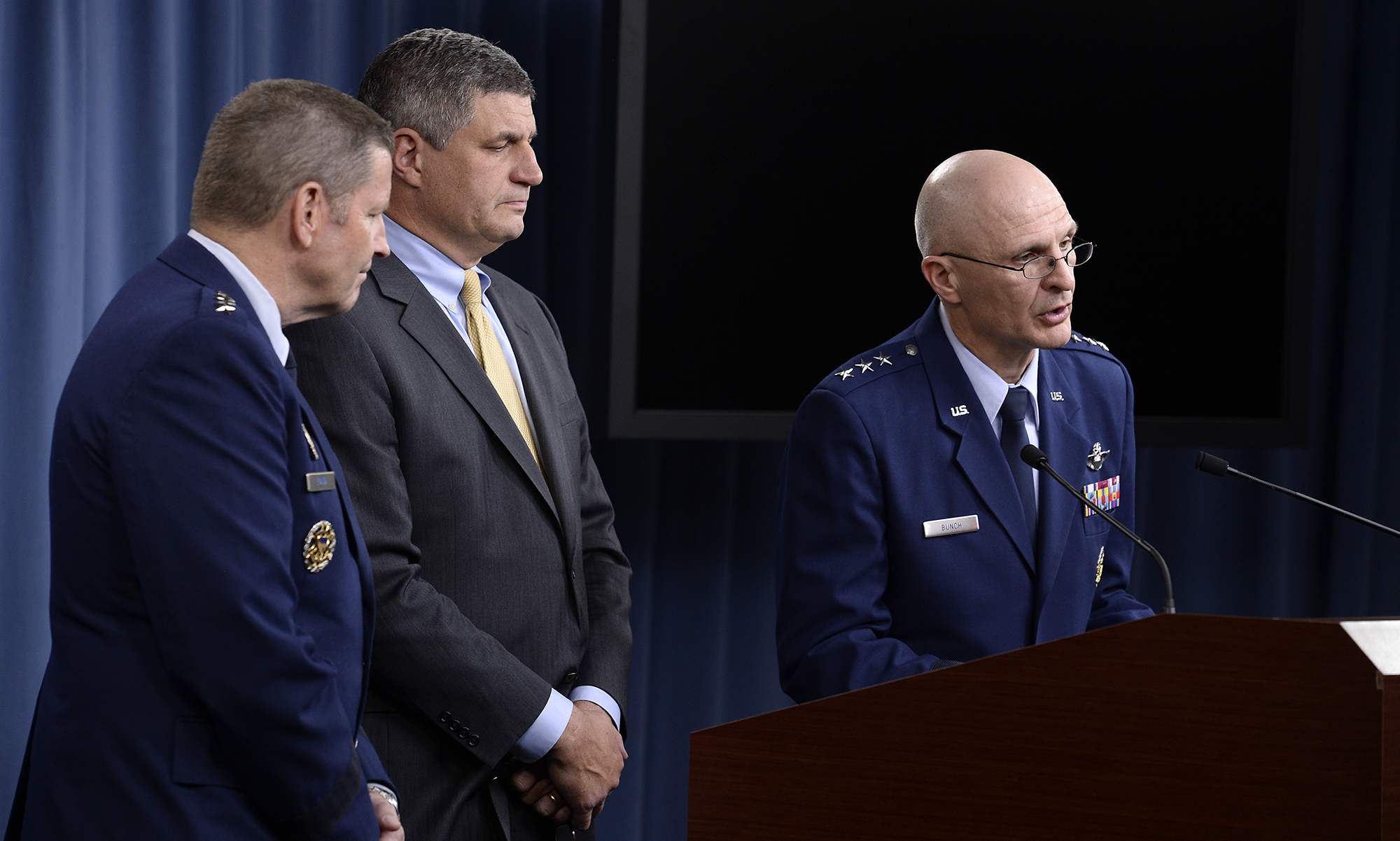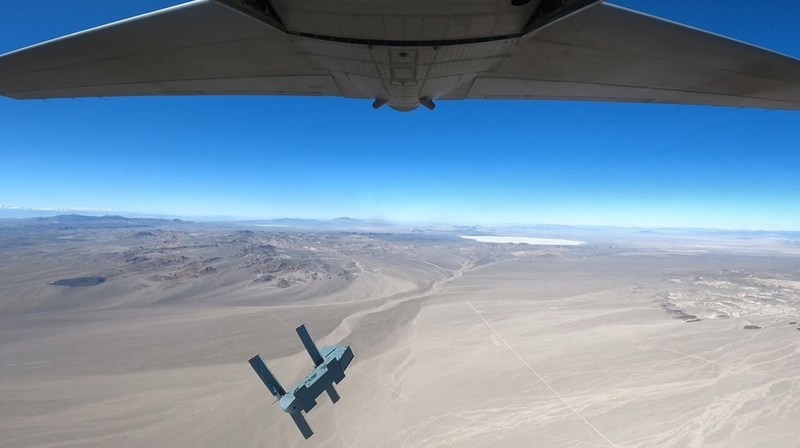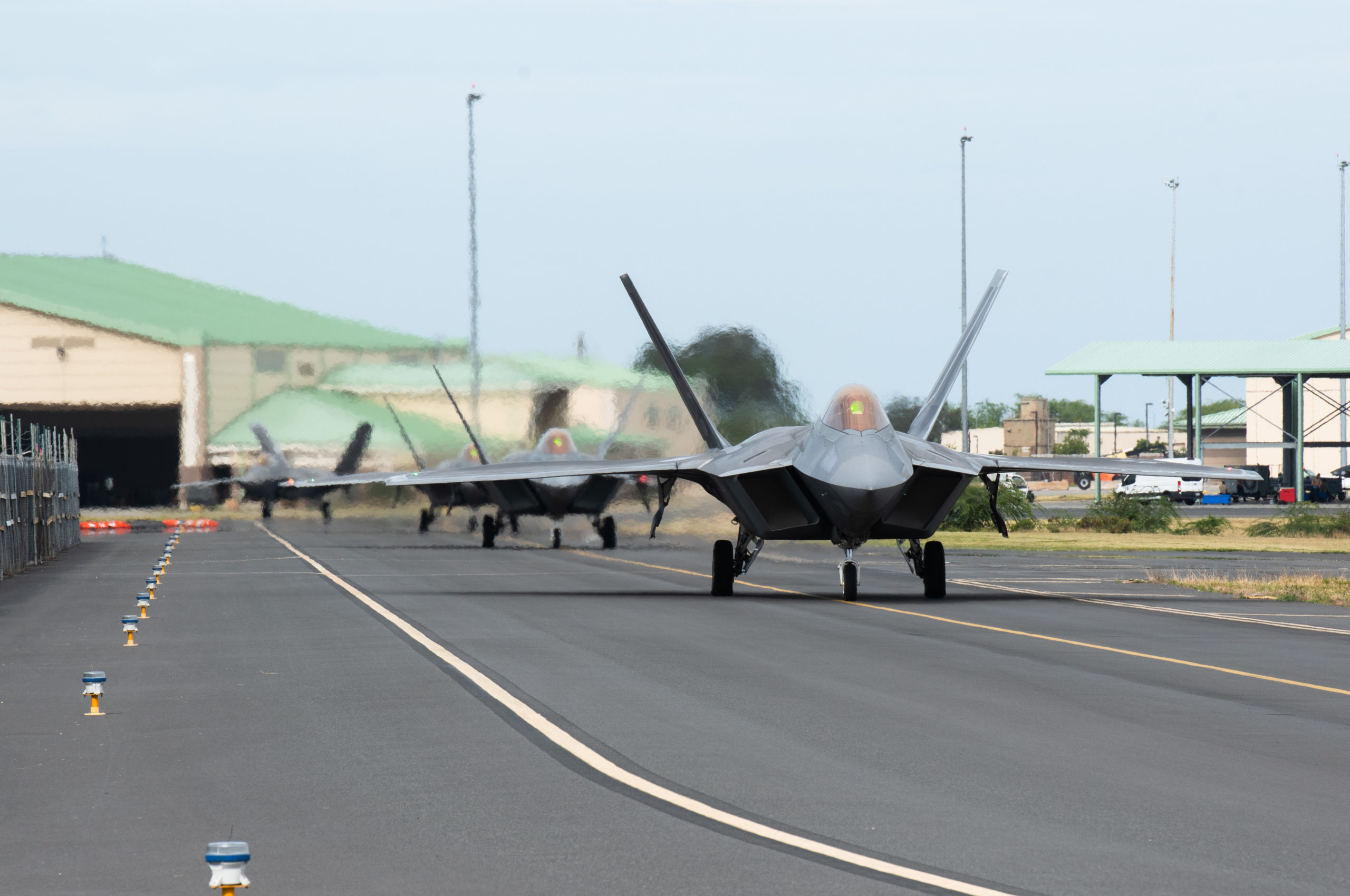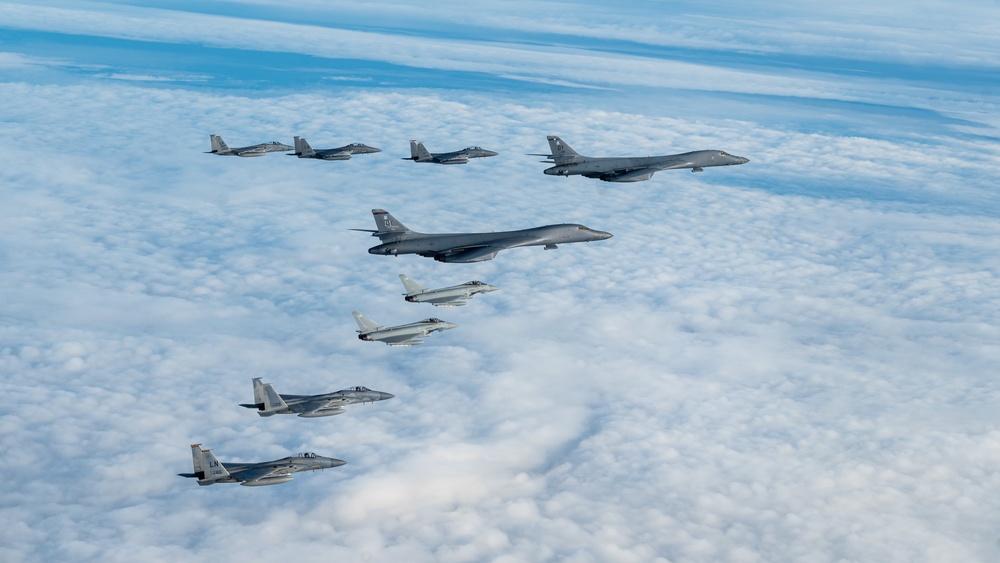The Air Force is moving away from weapons meant to strike specific types of targets and instead toward generic munitions with “low-cost, swappable” payloads that can be used in a variety of ways, Air Force Global Strike Command planner Maj. Gen. Jason R. Armagost said Nov. 30.
Speaking on an AFA Mitchell Institute for Aerospace Studies webinar, Armagost said the munitions of the future will be made of lightweight materials and be either very fast or stealthy for survivability. Other goals are to increase production numbers, reduce cost, and expand the types of targets that can be struck on a single mission while avoiding weapons “exquisitely” tuned to a specific purpose.
The new “multi-domain” munitions will comprise the main body of USAF’s conventional weaponry, with the only specialty weapons likely to be lightweight, high-speed, long-range missiles to attack mobile targets and heavy munitions geared to take out “hardened, deeply-buried” targets.
“Those are two very different [targets] that require some very different characteristics,” he said. For other targets, generic weapons with selectable effects are the way forward.
The virtual event was held to discuss a Mitchell paper, “Affordable Mass: the Need for a Cost-Effective [Precision-Guided Munition] Mix for Great Power Conflict,” written by Mark A. Gunzinger. The paper said the Air Force needs to “fill the gap” between standoff and direct attack munitions with affordable munitions that can be produced en masse. Gunzinger said USAF will need more munitions in the future because adversary air defenses will be able to shoot down individual weapons, meaning more missiles or bombs will be needed to destroy fewer targets. He also said submunition technology may make it possible to take out “more targets per weapon, instead of just … targets per sortie.”
Armagost noted that he “lived through the ‘Great Hellfire Drought of 2018,’” when there were shortages of preferred precision munitions.
“You don’t want to get into a situation where you’re having to get creative with legacy weapons that don’t really answer the mail in a high-end fight,” he said. “It’s arguably not a sustainable answer to the military problem at hand.”
The new weapons need to have “utility across the range of force structure and weapons platforms.” They need to connect to the existing kill chain “and/or, in the future, a long-range kill chain,” he asserted, in which targets are “developed … en route,” especially for long-range strike platforms that “take off many hours before the action takes place,” Armogost said.
The defense industry is rapidly developing new multimode seeker technology, which is making such munitions possible, he noted.
And just as the industry is adjusting to open-systems architecture, Armagost said the Air Force will take the same approach with weaponry. “We don’t want vendor lock” nor to have munitions that are “tied to a specific platform,” he said.
Armagost said Air Force Secretary Frank Kendall has shared his thinking on munitions.
“He has said that future munitions need to be long range, they need to be relevant—and part of that relevance calculus is cost—and we need a sufficient volume of fire,” Armagost said. “How do we design that back into the strategy, … make our weapons-capabilities mix fit with our fifth-generation force and our legacy force.”
The conclusion is that “everything has got to be multi-domain,” added Armagost. “We can’t think in strict terms of, ‘This weapon is designed for this specific target.’ … It’s inherently multi-mission, … it has to have that flexibility built in.”
Armagost said Kendall has shown a “willingness” to take some short-term risk in buying fewer legacy weapons and investing in the development of new ones, with an eye toward, “What can you do for $300,000 per weapon?” That’s what Gunzinger argued is likely the “sweet spot” for munitions that have a broad range of applicability across the battle space.
“That may involve a mix of boosted weapons,” Armagost added, with an “additively manufactured” motor coupled to existing munitions to give them more standoff range. Another approach would be “low observable, lifting-body kind of designs, [or] we may design a seeker that gets us under” the $300,000 mark, he said. Armagost said the Air Force is anxious to “capitalize on the work that’s already been done” by allies or partner nations in these respects, “to really get the most bang for our buck.”

It’s important that “we don’t … design a force that lasts 10 days,” he said, referencing a chart in the Mitchell paper that said the Air Force would likely run through its standoff munitions inventory in just over a week in a Pacific conflict, given the profusion of targets.
Armagost said it’ll be a “series of ongoing decisions … and tradeoffs” to decide when to let go of the current family of Joint Direct Attack Munitions (JDAMs) and other precision-guided munitions and to move on to a new future family of multi-domain munitions. The transition will occur as concepts of operation and the nature of the kill chain evolves, he said.
Gunzinger said ideally the transition would have taken place “five years ago,” so it needs to happen “as quickly as possible.”
China and Russia are “not waiting,” Gunzinger said. “They’re building up their forces and next-generation weapons. We’re already behind. We’re in a deficit. We have a force that’s too small for one war, and we know that. So, we’ve got a lot of work to do to catch up.”
Retired Lt. Gen. David A. Deptula, head of the Mitchell Institute, said the JDAM is “kind of like a P-40” fighter from World War II. “It’s time to move on. … The Air Force needs to get serious about investing in … new concepts, and doing it fast.”
Deptula also said the discussion about the DOD-wide portfolio of weapons needs to rationalize how the money is spent, noting that the current cost estimate for the Army’s Long Range Hypersonic Weapon is $40 million each. For the cost of two of those, the services could buy “66 or more Stand-in Attack Weapons, and hit 66 aimpoints” instead of two, Deptula argued. Hypersonic missiles are “not a level-of-effort weapon,” he said.
